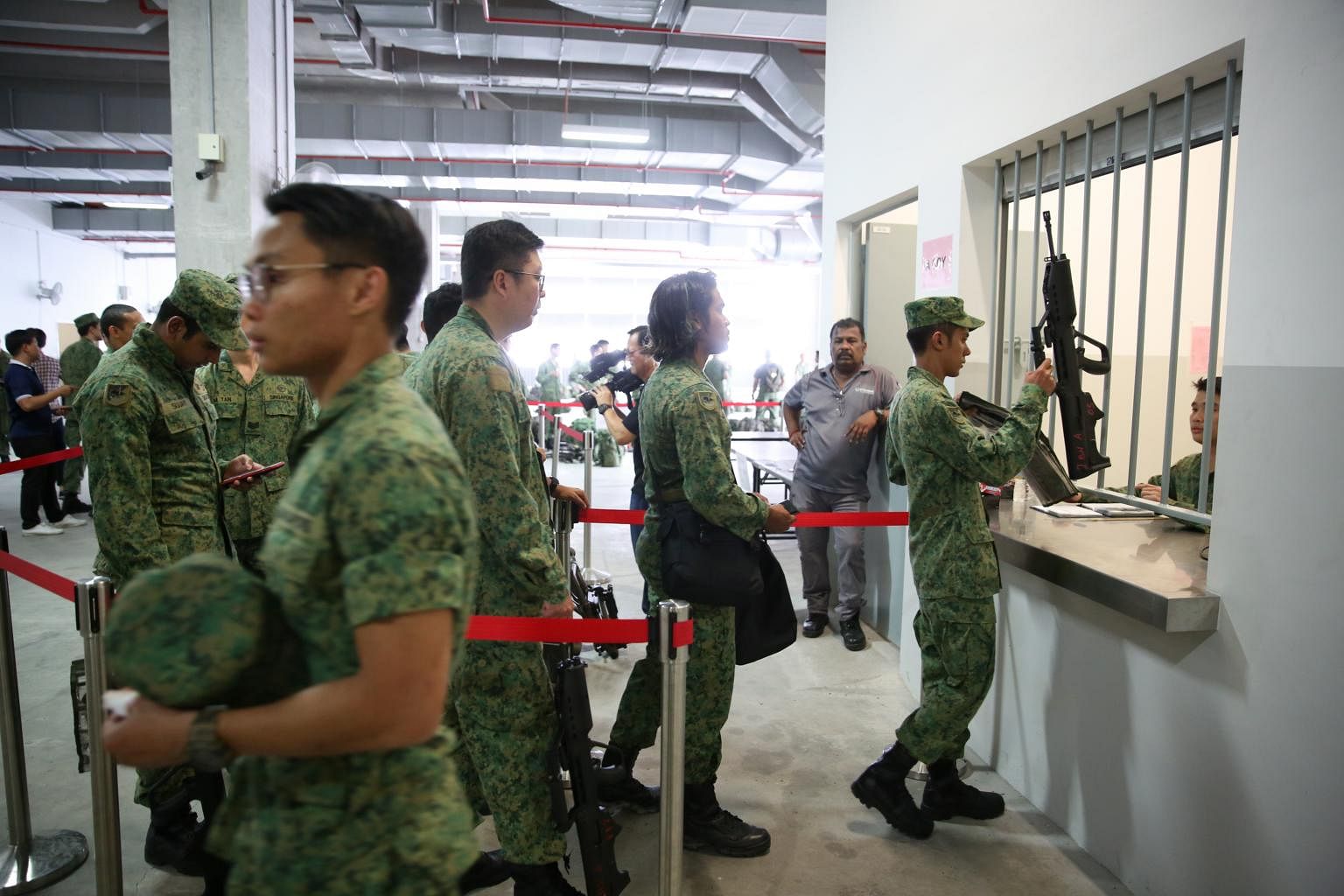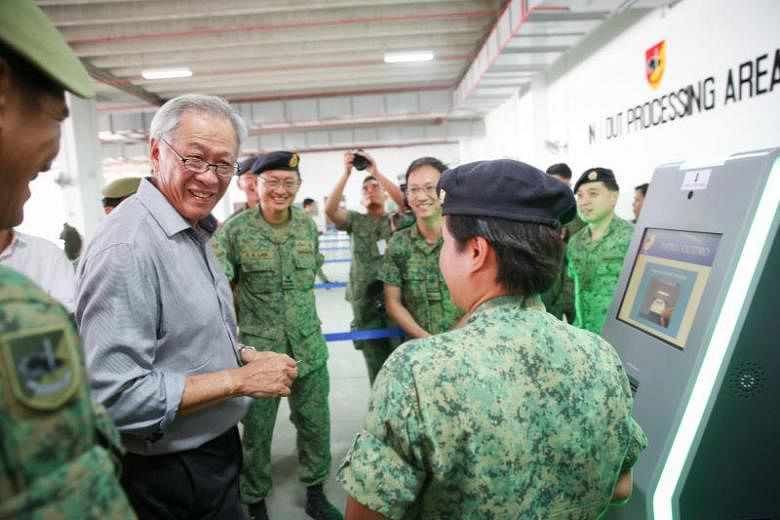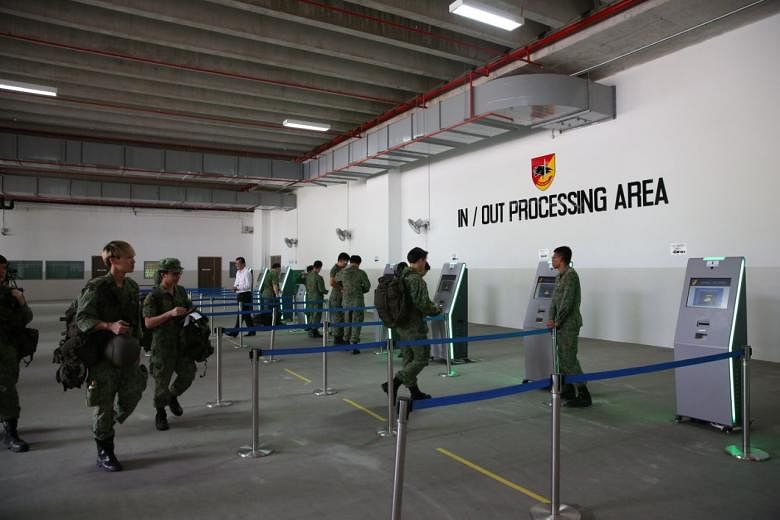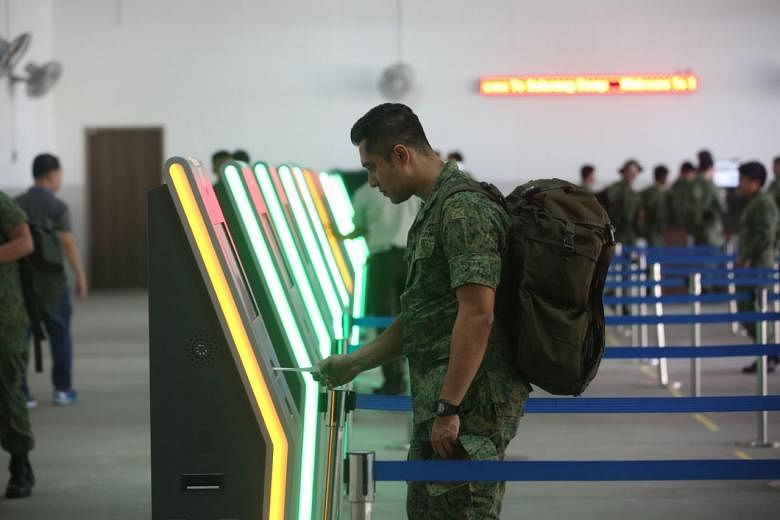SINGAPORE - With a new sprawling complex in Selarang Camp in Loyang, servicemen recalled for duty can now be combat ready faster.
The army's first enhanced Mobilisation and Equipping Centre (MEC) includes facilities such as self-registration kiosks.
The four-storey building was completed last year (2017) with a total floor area of 147,020 sq m, or about 22 football fields.
For the first time, military vehicles are also now stored under the same roof in a controlled-humidity facility. This allows electronic systems to be kept on-board the vehicles when not in use, translating to higher readiness and efficiency.
Previously, such systems had to be removed and disassembled by technicians.
It all translates to less time needed to mobilise and equip troops.
NSmen Corporal (NS) Shentil Samugam, 33, who has been mobilised three times since 2009, completed his process by 1.30pm on Saturday (Jan 27) when the centre was put through its paces in SAF's largest mobilisation exercise since 1985.
Going through the new MEC saved him about 80 per cent in time because he did not have to travel to multiple locations to get equipped.
He said: "Previously we had to also go through administrative officers and sign papers, and the queue was really long. Now with the self-service kiosks, the process has become more efficient and we can be equipped all in one place."

Some 5,500 operationally-ready national servicemen (NSmen) were recalled to the centre on Saturdayfor the mobilisation exercise which ended later that day.
NSmen streamed in after 11am - the time they received an SMS alert - and reported for duty, drew their arms, and did their equipment checks within the new MEC.
Head of Supply Hub East Major Pak Chun Hua, 42, who oversees the centre, said: "The key intent of this enhancement is to shorten the time required for NSmen to be equipped. It translates the administrative time required to travel and draw equipment into focusing on operational readiness."
"The time saved can be used to focus on their basic soldiering skills, be it for the commanders doing map-planning exercises, or for soldiers on the ground to go through their weapon drills," he added.
When servicemen report at the new centre, they will register at the self-service kiosks, which was previously done at manned counters. Self-service kiosks reduce the time taken from one minute to about 20 seconds, and manpower required from 24 to eight people.
There are 10 self-service kiosks and two helpdesks at the MEC in Selarang. Servicemen scan their identification cards, and photos will be taken of them automatically as a form of security check.
The kiosks provide a receipt-size printout of the equipment they need to draw, which they can do so with the same slip at various stations. Counter operators in the past used to verify if all equipment have been returned when servicemen leave the camp, but this process is now automated.
Ammunition is now also distributed faster. By using 40-foot trailers instead of five-ton trucks to deliver ammunition from the SAF Ammunition Command to MECs, the total number of vehicles required is reduced by 70 per cent, and about 60 per cent less manpower is needed.
The trailers also have another advantage - they have a larger carrying capacity of 40 pallets, instead of six pallets for the trucks.
In the past, servicemen had to report early to go to ammunition depot bases to collect them, rather than have it delivered to them.
MECs were first established in 2009 allowing NSmen to go through a one-stop mobilisation and equipping process. It took between four and five hours for servicemen to draw their equipment, such as rifles, binoculars and ammunition in one place.
This was an improvement over the 10 to 12 hours it took previously when troops had to visit various locations to get all they needed to be combat ready.
On whether other MECs will be upgraded in the future, Major Pak said: "The Army constantly reviews our systems and processes. Enhanced features for other MECs will be introduced in tandem with the upgrading of our camps."




